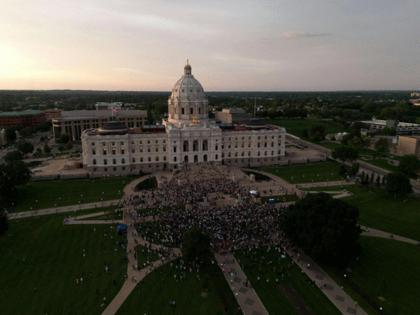Minnesota eyes improvements to security at State Capitol, lawmakers' homes
Published in News & Features
Minnesota is considering expanding an emergency alert system for legislators and has ordered an outside review of security at the State Capitol in response to last month’s shootings of two lawmakers and a recent break-in.
The Minnesota House and Senate are also making changes amid concerns about lawmaker safety, allowing members to tap up to $4,500 in state funding for home-security upgrades. The money will come out of the two chambers’ respective operating funds.
The moves come after a gunman killed House DFL leader Melissa Hortman and her husband, Mark, in their Brooklyn Park home, and shot Sen. John Hoffman and his wife, Yvette, at their home in Champlin.
“Capitol security was elevated after the events of June 14. What happened on that morning was nothing short of tragic and its deep impacts to our state are still felt today,” state Public Safety Commissioner Bob Jacobson said at a news conference Tuesday.
Other recent events have intensified the concerns about safety. Days after the shootings, a registered lobbyist was charged with “threats of violence” that included targeting the State Capitol. And this past weekend, an intruder was found naked inside the Senate chamber.
Charges were filed Tuesday related to the break-in, accusing a 36-year-old Minneapolis man of entering the Capitol after hours through a door he had wedged open while there earlier in the day.
Gov. Tim Walz told reporters Monday that state politicians are facing a new reality where threats are more common.
“It’s just much more dangerous,” the DFL governor said.
At the Capitol news conference Tuesday, Walz’s top public safety officials and other local law enforcement representatives said they are continuing to balance what have become two opposing interests: keeping the Capitol — the “People’s House,” as it’s known — as open as possible while ensuring the safety of visitors and those who work there.
“That identity is foundational,” said State Patrol Col. Christina Bogojevic. “But so is the safety of everyone who walks through its doors.”
The state has already spent nearly $20 million on security measures at the Capitol complex over the past decade, including blast-resistant glass, bollards to prevent vehicle attacks and new security cameras. The Capitol Area Security Advisory Committee recently recommended spending $40 million more, based on an older state-commission study, but the Legislature last session approved just $2 million for Capitol security upgrades.
“We’ll continue to ask for funding that we think is necessary to carry out our mission,” Jacobson said.
The state’s new third-party security assessment will bring “fresh eyes and objectivity” to the Capitol, Bogojevic said. Officials and legislators will soon discuss whether to add more officers, reduce the number of public entrances and introduce metal detectors, she said.
The Capitol is one of only a few in the country without metal detectors, but officials have said it is already wired for them.
Bogojevic said state officials are also exploring whether they can expand an existing emergency response system used to alert legislators of threats on the Capitol complex. It’s possible it could be expanded to reach legislators when they are away from the Capitol, too.
There was no mass notification system for legislators on the morning of June 14. Communication was spotty and done through a patchwork of agencies, leaving some lawmakers unaware for several hours of the exact threat they faced.
“We are discussing how we can expand that and use that for external messaging [to legislators] as need be,” Bogojevic said.
Participation in the Capitol alert system overseen by the State Patrol has long been voluntary. But after the lawmaker shootings, the Minnesota House DFL and GOP caucuses told their members they must enroll in the rapid notification system.
The Minnesota Senate hasn’t yet decided whether to require its members to sign up for the system, Senate Secretary Tom Bottern said in an email Tuesday.
Both the House and Senate have chosen to help cover the cost of home-security systems for legislators.
“Costs related to this assistance will be paid from the existing appropriation for the Senate operating budget,” Bottern said last week.
Legislators will be able to access up to $4,500 from the chambers’ operating funds to install home-security systems and other safety measures such as deadbolts or window locks, according to a House official with knowledge of the decision. The change was first reported by WCCO TV.
Lawmakers will have to provide receipts and document expenses, the official said.
Sen. Jim Abeler, R-Anoka, welcomed the change in a recent interview. He said many legislators have received death threats while in office.
“It’s off-putting. You take a position as an elected person, you don’t think your family is going to be at risk,” Abeler said. “We’re just citizen legislators.”
________
©2025 The Minnesota Star Tribune. Visit at startribune.com. Distributed by Tribune Content Agency, LLC.







Comments